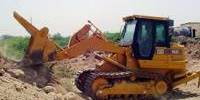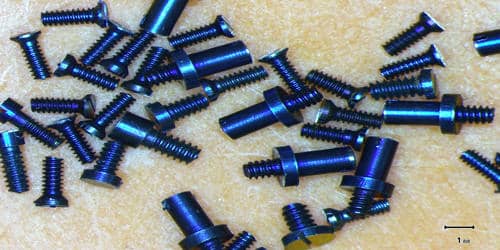Engineering researchers are working to replicate the complex and intricate structures of biological tissues in order to create materials and devices that mimic their properties. This field, known as tissue engineering, involves using a combination of biological, chemical, and physical techniques to create functional tissue replacements for medical applications.
Everything in the video game Minecraft, including the characters and animals, is built of tiny 3D building pieces known as voxels. A voxelated, Minecraft-like method has been created by materials scientists at the University of Virginia School of Engineering and Applied Science that employs droplets as the fundamental building blocks to construct intricate structures similar to human tissues and organs.
Liheng Cai, an assistant professor of materials science and engineering, chemical engineering and biomedical engineering, leads the team. Jinchang Zhu, a Ph.D. student in Cai’s Soft Biomatter Laboratory, develops their bioprinting technique, digital assembly of spherical bio-ink particles or DASP.
“In principle, DASP allows us to precisely define the location, composition and properties of individual droplets and assemble them into 3D constructs that match the artistry of biological tissues,” Zhu said.
The team extrudes and deposits bio-ink droplets inside a supporting matrix, a slurry bath that retains and supports the droplets in 3D space, using a specialized 3D printer. The droplets enlarge, come into contact with one another, and finally solidify to form a three-dimensional lattice structure.
DASP demonstrates a wide range of design and fabrication options for functional tissue constructs by combining droplets composed of various materials or enclosed with diverse components.
Precise manipulation of viscoelastic voxels represents both a fundamental and technological challenge in soft matter science and 3D bioprinting. We are just at the beginning to establish the foundational science for voxelated bioprinting. And we hope one day we can completely translate the Minecraft approach to 3D bioprinting, such that we can create highly functional 3D tissue mimics for basic and applied biomedicines.
Professor Liheng Cai
Zhu first-authored the team’s original paper published October 2021 in Advanced Functional Materials, where Cai and his collaborators proved the concept of voxelated bioprinting.
“The paper we published last year was a first step toward 3D printing tissue with the complexity and organization needed for biomedical engineering, drug screening and disease modeling,” Cai said.
Zhu and Cai were invited to share their latest research, All-aqueous Printing of Viscoelastic Droplets in Yield-stress Fluids, in a September 2022 special issue of Acta Biomaterialia.
They describe how to manipulate a viscoelastic droplet in a matrix known as a yield-stress supporting matrix in this most recent paper: The supporting matrix acts like a mound of sand, which when left undisturbed behaves like a solid yet flows like a liquid when put under stress.
There is essentially no strain at the borders between the bio-ink droplets and the surrounding environment since both the supporting matrix and the bio-ink droplets are watery. Although the bio-ink is exceedingly viscous, like honey, it is elastic when deformed quickly.
Three key stages are identified as being involved in the dynamics of the entire bioprinting process by Zhu and Cai: drop creation, detachment, and relaxation. The nozzle separates from the droplet as it is being extruded by moving horizontally with great rapidity, leaving the droplet behind and trapped inside the supporting matrix.
“An analogous case is the classical tablecloth-pulling trick, in which the table cloth is pulled away suddenly, leaving plates on the table due to inertia force,” Zhu said, “But in our technique, the droplet is detached from the nozzle mostly due to the confinement force from the supporting matrix.”
The droplet width, nozzle diameter, and nozzle acceleration were among the other factors the team discovered as having a significant impact on printing resolution. According to their research, printing droplets with high degree of fidelity necessitates a reasonably big droplet-to-nozzle diameter ratio and an appropriate nozzle acceleration of up to ten meters per square second.
“Precise manipulation of viscoelastic voxels represents both a fundamental and technological challenge in soft matter science and 3D bioprinting,” Cai said. “We are just at the beginning to establish the foundational science for voxelated bioprinting. And we hope one day we can completely translate the Minecraft approach to 3D bioprinting, such that we can create highly functional 3D tissue mimics for basic and applied biomedicines.”
















